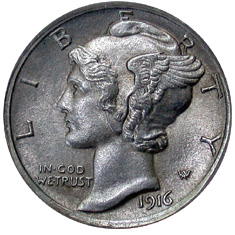 Precious metals investors and coin collectors may soon be able to purchase American Palladium Eagle coins from the United States Mint. The bill H.R. 6166 was passed in both the House and Senate and signed into law by the President on December 14.
Precious metals investors and coin collectors may soon be able to purchase American Palladium Eagle coins from the United States Mint. The bill H.R. 6166 was passed in both the House and Senate and signed into law by the President on December 14.
The .9995 fine, one ounce palladium coins will be produced provided that a required marketing study demonstrates sufficient demand for palladium bullion coins produced by the United States Mint exists. The first coins are required to be minted and issued within one year of the submission of the study.
Specific guidance is provided regarding the sourcing of palladium for use in the new bullion series. It must be purchased from palladium mined from natural deposits in the United States within one year after the month in which the ore is mined. If no such palladium is available or it is not economically feasible, other available sources may be utilized.
Designs for the Palladium Eagle will be high relief likenesses of Adolph A. Weinman’s Mercury Dime obverse and 1907 AIA medal reverse. Both bullion and collector coins would feature these designs, although the collector coins could be issued in proof and uncirculated versions, with different surface treatments.
The bill authorizing the Palladium Eagles was introduced by Denny Rehberg of Montana, the only state in the U.S. where palladium is mined. The Congressman had presented the program as a way to fill a niche for investors and collectors, and to counterbalance the effects of General Motors decision to end its supply agreement with Montana’s Stillwater Mining Co.
Today, it was announced that General Motors decided to renew their supply agreement with Stillwater in a three year deal. Stillwater also supplies palladium to Ford Motor Co. until a contract due to expire at the end of the year.
 Should the United States Mint produce a palladium bullion coin? A Congressman from Montana, where most domestic palladium mining takes place, thinks so.
Should the United States Mint produce a palladium bullion coin? A Congressman from Montana, where most domestic palladium mining takes place, thinks so.